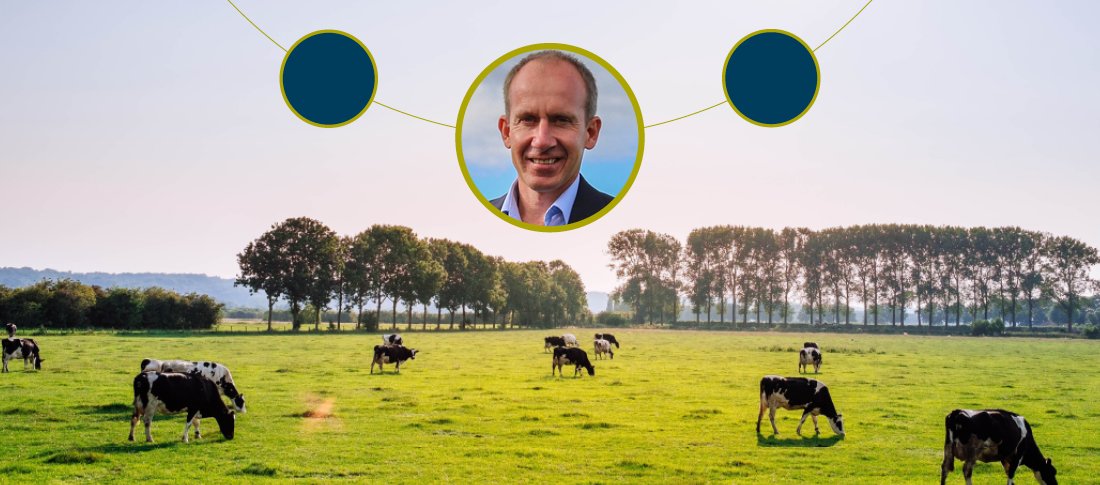Over the next 3 months, the #MegaFertility campaign will be sharing the opinions of dairy experts from across the industry to raise awareness of some of the issues around dairy cow fertility. Getting the foundation of high fertility genetics into the herd will greatly assist in keeping on top of improved pregnancy rates - advice from Marco Winters, Head of Animal Genetics AHDB
The importance of using the right genetics, when it comes to improving a herd’s fertility status cannot be emphasised enough. Of course, it is important to pay attention to optimising fertility management too, but getting the foundation of high fertility genetics into the herd, will greatly assist in keeping on top of improved pregnancy rates, and minimising the animals that have to be sold open.
This impact of genetics can be clearly mapped since the cow Fertility Index (FI) was launched in the UK by AHDB Dairy in 2005. Since the introduction, nearly 15 years ago, a consistent and continuing improvement in the quality of sires used can be seen. This contributed to the improvement in fertility of the national herd since around 2009, and based on the genetic forecast, we predicted it will take around six more years for dairy cow fertility to return to the levels of 1995, when the average calving interval of UK Holsteins was 390 days.
Fertility Index sires
These fertility improvement are underpinned by the use of superior Fertility Index sires, in part promoted by the fact that the FI is incorporated in the Profitable Lifetime Index (£PLI) with a weight of 15.3%. The average FI of sires used in 2018 was +7.1, which is more than 11 points above those used in 2005, and is now even higher than the average of the sires used in 1990. Importantly these genetic gains in fertility are made without sacrificing on the improvement on other important traits.
Genomic selection of sires has rapidly accelerated the availability of superior Holstein genetics in the UK since 2012, and this technology now also aids improvement in most other dairy breeds.
The vast majority of dairy farmers today are skilled in selecting the right sires for improved fertility, and increasingly now also monitor their own herd’s genetic status. (Remember, the dam contributes 50% of the genetics to the next generation, and so the importance of dam selection should not be ignored.) Luckily, with improved fertility of the herd, it makes it possible for producers to be more selective in which females are picked to breed the next generation of herd replacements.
Tools and Testing
AHDB offers on-line tools to producers and their advisors, to access bespoke herd genetic reports which assist in this selection process. Once the best females are identified from amongst the milking and young-stock herd, these females can be earmarked for mating to top quality dairy sires, and by using sexed female semen, the benefit of this selection can be further enhanced.
In recent years, the advent of genomic testing has not only made the selection of superior bulls and heifers easier, it also greatly improves the reliability with which this selection can be performed - something which was impossible as little as 10 years ago.
Genomic testing is especially beneficial for improving the reliability of estimated breeding potential for traits which are more difficult to measure, such as fertility. AHDB has been offering genomic evaluations for heifer calves since 2013, and we are seeing an upsurge in interest for the use of this technology by farmers.
To genetically improve your herds’ fertility status consider the following four points;
- Choose sires with high Fertility Index scores (Note; pick these from the top £PLI sires to also improve on a range of other important traits.)
- Carefully select your most fertile (Fertility Index) and most profitable (£PLI) cows and heifers to breed from. (Remember, AHDB provide bespoke herd genetic reports containing this information to farmers who participate in official milk recording.)
- Consider genomically testing your young-stock to make your female selection easier, more reliable and ultimately accelerate the genetic progress of your herd.
- Consider using sexed semen on your top end females to maximise the opportunity of genetically superior females. This also frees up the bottom end of the herd for more use of beef semen.
Historically, genetics was sometimes seen as the domain of breeding experts. Today, however nothing could be further from the truth. We have the simple tools to add to the stockman’s eye, alongside the availability of top quality genetics. This enables every producer who breeds their own replacements to be the expert, simply by using some easy-to-follow steps.
